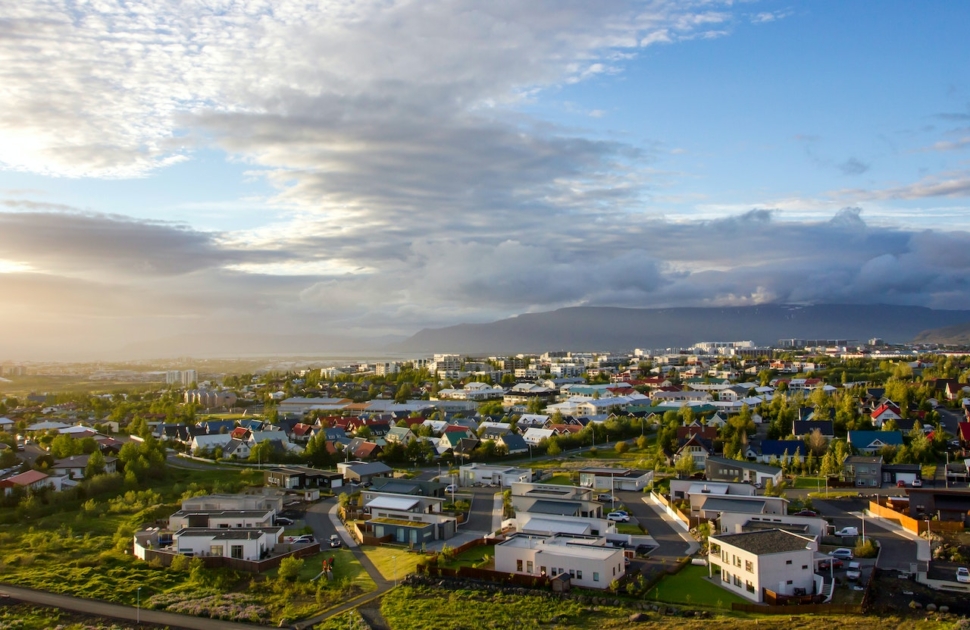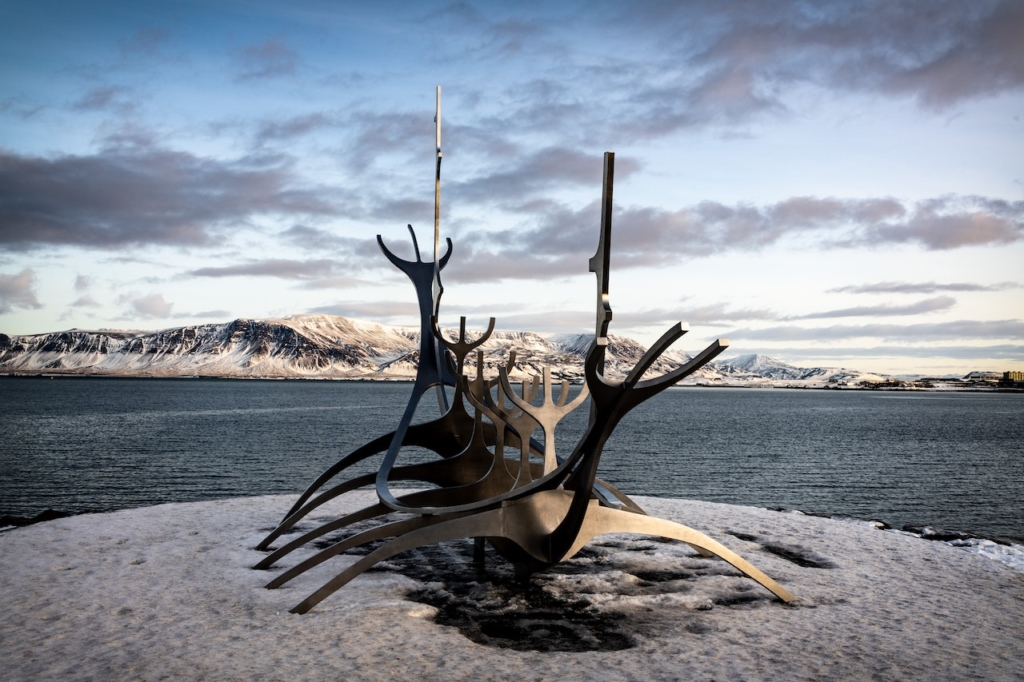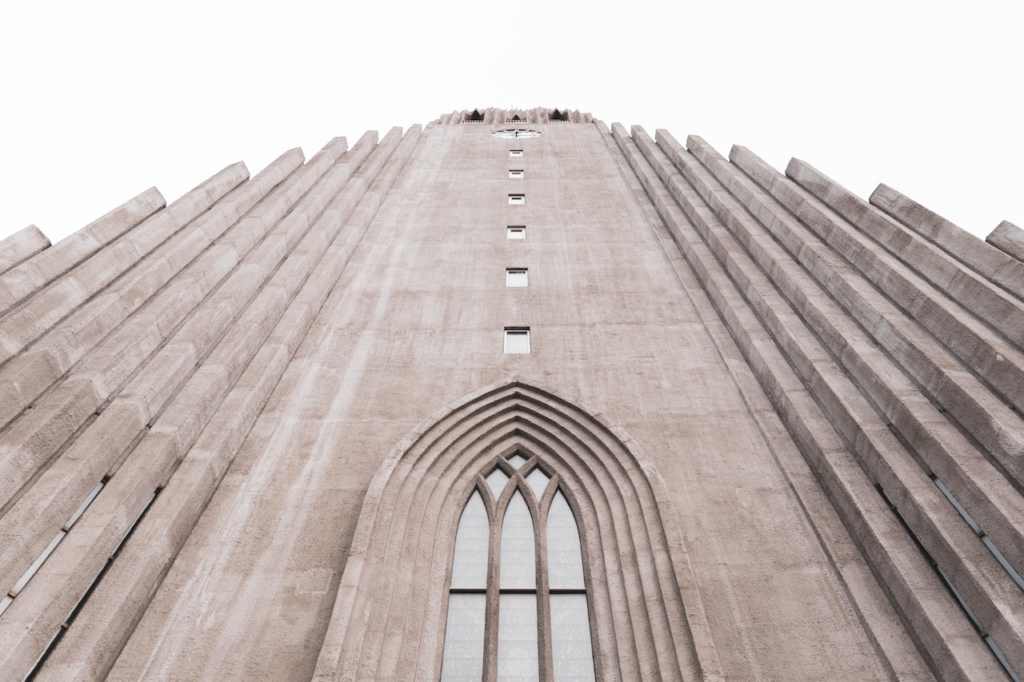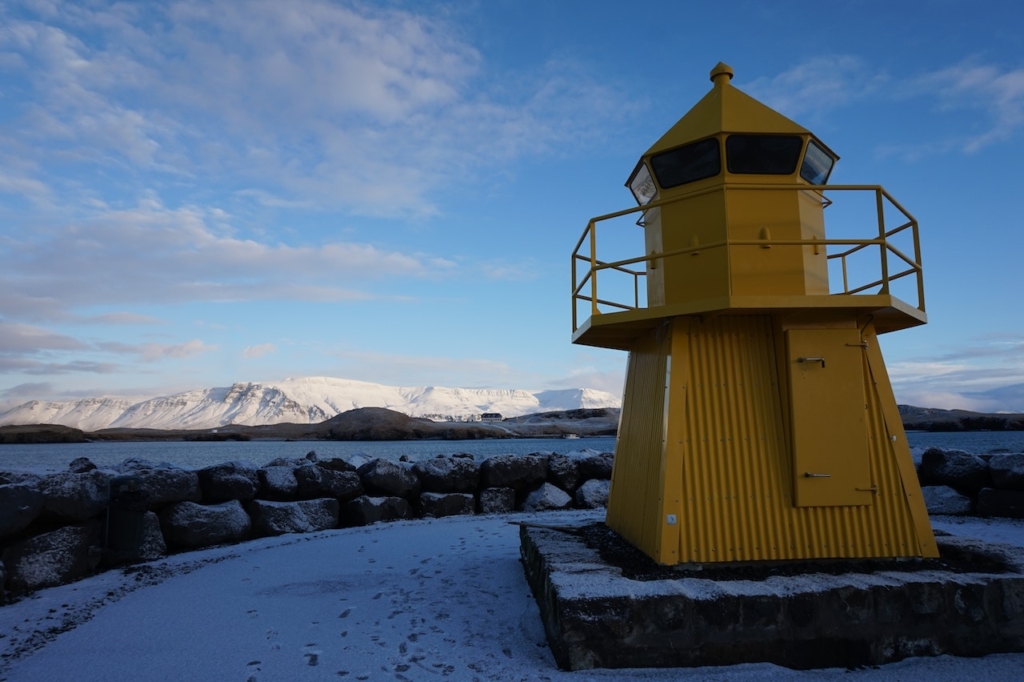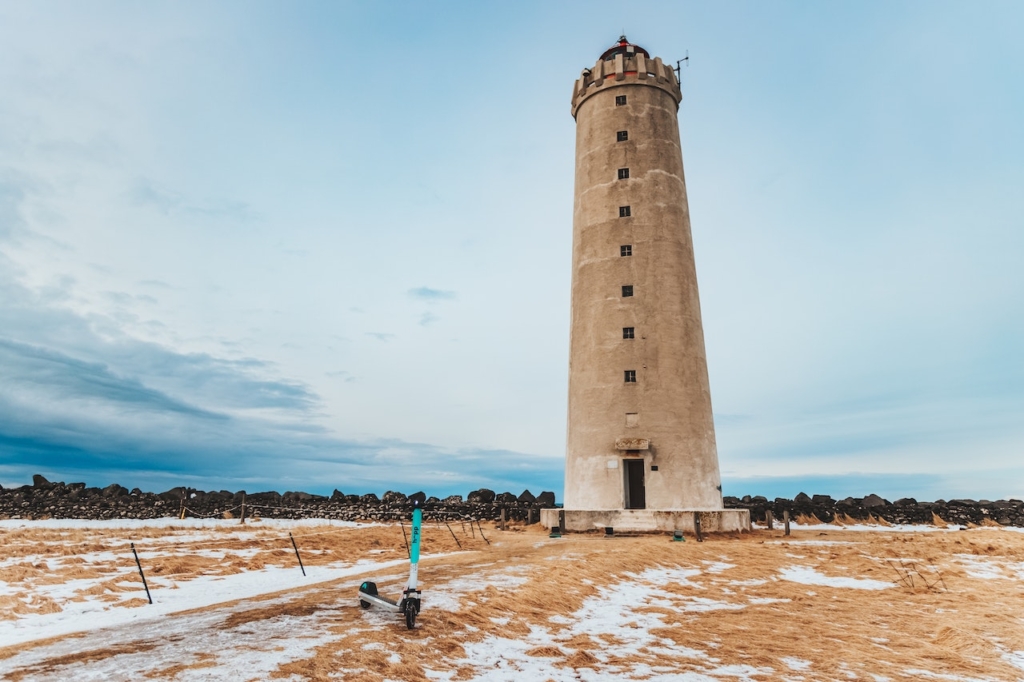Reykjavik, the capital city of Iceland, is a unique destination that is known for its stunning natural beauty, vibrant culture, and friendly locals. Located on the western coast of Iceland, Reykjavik is a city that is steeped in history and tradition, but also embraces modernity and innovation.
As one of the most northern capital cities in the world, Reykjavik offers visitors a truly unforgettable experience. The city is surrounded by breathtaking landscapes, including rugged mountains, sparkling fjords, and vast expanses of open wilderness. Visitors can explore the city’s many museums, art galleries, and cultural landmarks, or venture outside the city to hike, bike, or ski in some of Iceland’s most stunning natural settings.
Despite its small size, Reykjavik is a dynamic and cosmopolitan city that is home to a thriving arts and music scene, as well as a growing tech industry. With a population of just over 120,000 people, the city is known for its friendly and welcoming atmosphere, and visitors are sure to feel right at home in this charming and unique destination.
History and Culture
Old Norse Influence
Reykjavik, the capital city of Iceland, has a rich history that dates back to the Vikings. The city’s name, Reykjavik, means “smoky bay” in Icelandic, which was named after the steam rising from the hot springs in the area. The Old Norse influence is still evident in the city’s culture, language, and architecture.
Icelandic Culture
Icelandic culture is unique and has been shaped by the country’s isolation and harsh climate. The people of Iceland are proud of their heritage and have a strong sense of community. The country’s literature, music, and art reflect the country’s rich history and culture.
Arts Scene
Reykjavik has a thriving arts scene, with many galleries, museums, and theaters. The National Gallery of Iceland is a must-visit for art lovers, with a collection that includes works by Icelandic and international artists. The city also hosts the Reykjavik Arts Festival, which showcases the best of Icelandic and international art.
National and University Library of Iceland
The National and University Library of Iceland is the largest library in the country and is home to over 1.5 million books and manuscripts. The library is an important resource for scholars and researchers, and visitors can explore the library’s collections and exhibitions.
Árni Magnússon Institute
The Árni Magnússon Institute is a research institute that specializes in Icelandic studies, including language, literature, and history. The institute’s collection includes over 22,000 manuscripts and documents, making it an important resource for scholars and researchers.
National Gallery of Iceland
The National Gallery of Iceland is the country’s premier art museum, with a collection that includes works by Icelandic and international artists. The museum’s collection spans from the 19th century to the present day and includes paintings, sculptures, and installations.
Parliament Building
The Parliament Building, also known as Alþingi, is the oldest parliament in the world, dating back to 930 AD. The building is an important symbol of Icelandic democracy and is open to visitors.
University of Iceland
The University of Iceland is the country’s oldest and largest university, founded in 1911. The university is a center of research and education, with faculties in the humanities, social sciences, natural sciences, and health sciences.
Tourist Attractions
Reykjavik is a city full of exciting tourist attractions that draw visitors from all over the world. Here are some of the must-see attractions in the city:
Hallgrímskirkja
Hallgrímskirkja is a stunning church located in the heart of Reykjavik. It is one of the city’s most iconic landmarks and is named after the Icelandic poet and clergyman Hallgrímur Pétursson. The church’s unique design is inspired by the basalt columns found in Iceland’s landscape. Visitors can take an elevator to the top of the tower to enjoy breathtaking views of the city.
Blue Lagoon
The Blue Lagoon is a geothermal spa located just outside of Reykjavik. The water is rich in minerals and is said to have healing properties. Visitors can relax in the warm, turquoise water while surrounded by Iceland’s beautiful natural landscape. The spa also offers a variety of treatments, including massages and facials.
Gullfoss Waterfall
Gullfoss Waterfall is one of Iceland’s most famous waterfalls. The waterfall is located in the Golden Circle, a popular tourist route that includes several other attractions. The waterfall is fed by the Hvítá river and drops 32 meters into a canyon. Visitors can view the waterfall from several different angles, including from a nearby viewing platform.
Thingvellir National Park
Thingvellir National Park is a UNESCO World Heritage Site located just outside of Reykjavik. The park is home to the Althing, Iceland’s parliament, which was established in AD 930. Visitors can explore the park’s stunning landscape, which includes volcanic craters, lava fields, and a rift valley where the Eurasian and North American tectonic plates meet.
Old Harbour
The Old Harbour is a historic area of Reykjavik that has been transformed into a lively cultural hub. The area is home to several museums, galleries, and restaurants, as well as a bustling harbor where visitors can take whale watching tours or go fishing.
Tjörnin
Tjörnin is a picturesque lake located in the heart of Reykjavik. The lake is home to several species of birds, including swans and ducks, and is surrounded by beautiful gardens and walking paths. Visitors can rent paddle boats or simply enjoy a peaceful stroll around the lake.
Laugavegur
Laugavegur is Reykjavik’s main shopping street. The street is lined with shops, restaurants, and cafes, and is a popular destination for both locals and tourists. Visitors can find everything from Icelandic wool sweaters to handmade crafts and souvenirs.
Overall, Reykjavik offers a wide variety of attractions that are sure to please visitors of all ages and interests. Whether you’re interested in history, culture, or natural beauty, there’s something for everyone in this vibrant city.
Cuisine
When it comes to cuisine, Reykjavik offers a variety of options for locals and tourists alike. Icelandic cuisine is known for its use of fresh and locally sourced ingredients, especially seafood and lamb.
Icelandic Cuisine
Icelandic cuisine is heavily influenced by its geography, as it is an island in the North Atlantic. The cuisine is characterized by its simplicity and focus on quality ingredients. Traditional Icelandic dishes include fermented shark, smoked lamb, and skyr, a type of yogurt.
Seafood
Due to its location, Reykjavik is known for its fresh and flavorful seafood. Local fish such as cod, haddock, and salmon are staples in many restaurants. Visitors can enjoy dishes such as fish and chips, seafood soup, and grilled fish.
Lamb
Lamb is another popular ingredient in Icelandic cuisine. The country is known for its free-range lamb, which is raised on grass and wild herbs. Lamb dishes include lamb chops, lamb stew, and smoked lamb.
When it comes to dining out in Reykjavik, there are plenty of options. Visitors can choose from high-end restaurants, casual cafes, and street food vendors. Many restaurants offer a mix of traditional Icelandic dishes and international cuisine.
Natural Wonders
Reykjavik is a city that is surrounded by natural wonders. It’s no wonder that the city is known as the “Land of Fire and Ice”. The natural beauty of Reykjavik is truly awe-inspiring. In this section, we will explore some of the natural wonders that can be found in Reykjavik.
Volcanoes
Reykjavik is situated on a volcanic island, and there are several active volcanoes in the vicinity. The most famous of these is Eyjafjallajökull, which erupted in 2010 and caused widespread disruption to air travel. Other notable volcanoes in the area include Hekla, Katla, and Bárðarbunga. Visitors to Reykjavik can take guided tours of these volcanoes, which offer a unique insight into the power and beauty of nature.
Hot Springs
Reykjavik is also home to some of the world’s most spectacular hot springs. The most famous of these is the Blue Lagoon, which is a geothermal spa that is located in a lava field. The water in the Blue Lagoon is rich in minerals, and it is said to have healing properties. Other hot springs in the area include the Secret Lagoon and the Mývatn Nature Baths.
Glaciers
Iceland is home to some of the largest glaciers in Europe, and Reykjavik is no exception. The largest glacier in the area is Vatnajökull, which covers an area of over 8,000 square kilometers. Visitors to Reykjavik can take guided tours of the glacier, which offer a unique opportunity to explore this icy wonderland.
Mountains
Reykjavik is surrounded by stunning mountain ranges, which offer some of the most breathtaking views in the world. The most famous of these is Mount Esja, which is located just outside the city. Visitors to Reykjavik can hike to the summit of Mount Esja, which offers stunning views of the city and the surrounding countryside.
In conclusion, Reykjavik is a city that is surrounded by natural wonders. From volcanoes and hot springs to glaciers and mountains, there is something for everyone to enjoy. Whether you are interested in nature, natural wonders, or simply want to explore the beauty of the “Bay of Smoke” and “Farmland”, Reykjavik has it all.
Activities
Reykjavik offers a plethora of activities for visitors to indulge in. Here are some of the most popular ones:
Whale Watching
Whale watching is a popular activity in Reykjavik, and visitors can spot a variety of species, including humpback whales, minke whales, and orcas. Many tour operators offer whale watching tours, which typically last between 2-3 hours. Visitors can choose between traditional boats or high-speed RIBs for a more adventurous experience. The best time to go whale watching is between April and October, although sightings are possible year-round.
Horseback Riding
Icelandic horses are a unique breed known for their small size and gentle temperament. Horseback riding is a popular activity in Reykjavik, and visitors can choose between short rides or multi-day tours. Many tours take visitors through scenic landscapes, including lava fields and mountains. Horseback riding is a great way to experience the Icelandic countryside and is suitable for all skill levels.
Geothermal Spa
Reykjavik is home to several geothermal spas, including the famous Blue Lagoon. These spas are heated by geothermal energy and offer visitors a relaxing and rejuvenating experience. Many spas offer a variety of treatments, including massages and facials. Visitors can also enjoy the natural surroundings, including hot springs and lava fields.
Overall, Reykjavik offers a variety of activities for visitors to enjoy, including whale watching, horseback riding, and geothermal spas. These activities provide a unique and unforgettable experience for visitors looking for adventure and relaxation.
Transportation
Reykjavik has a well-connected transportation system that makes it easy for visitors to explore the city and its surroundings. The city has a reliable bus system, taxis, rental cars, and bikes that visitors can use to get around.
Getting Around Reykjavik
The bus system in Reykjavik is operated by Strætó and is an affordable and convenient way to travel around the city. The buses run regularly and cover most of the city’s major attractions and neighborhoods. Visitors can purchase single tickets or a Reykjavik City Card that provides unlimited travel on buses, as well as free admission to many museums and attractions.
Taxis are also available in Reykjavik, and they are a convenient option for visitors who prefer a more personalized mode of transportation. Taxis can be hailed on the street or booked in advance through various apps like Hreyfill and BSR.
For visitors who want to explore Reykjavik on their own, rental cars are available at Keflavik International Airport and in the city center. Visitors can choose from a range of rental companies, including Avis, Budget, and Hertz.
Finally, Reykjavik is a bike-friendly city, and visitors can rent bikes from various locations around the city. Biking is a great way to explore the city’s many parks and scenic routes, and visitors can also take advantage of the city’s many bike lanes.
Overall, Reykjavik offers a range of transportation options that make it easy for visitors to get around the city and explore its many attractions.
Accommodation
Reykjavik offers a wide range of accommodation options, from budget hostels to luxury hotels. Visitors can choose from a variety of locations, including the city center, the harbor, and the suburbs.
Hotel Prices
Hotel prices in Reykjavik can vary greatly depending on the season and location. During the high season (June-August), prices tend to be higher, while in the low season (November-March), prices can be significantly lower.
The average price for a standard double room in a mid-range hotel in Reykjavik is around $150-200 per night during the high season. However, prices can go up to $400-500 per night for a luxury hotel in the city center. Budget options such as hostels and guesthouses are available for around $50-100 per night.
It is recommended to book accommodation in advance, especially during the high season, as availability can be limited and prices can increase closer to the travel date. Some hotels also offer package deals that include tours and activities, which can provide a more convenient and cost-effective option for visitors.
Overall, visitors to Reykjavik have a variety of accommodation options to choose from, with prices that can fit any budget.
